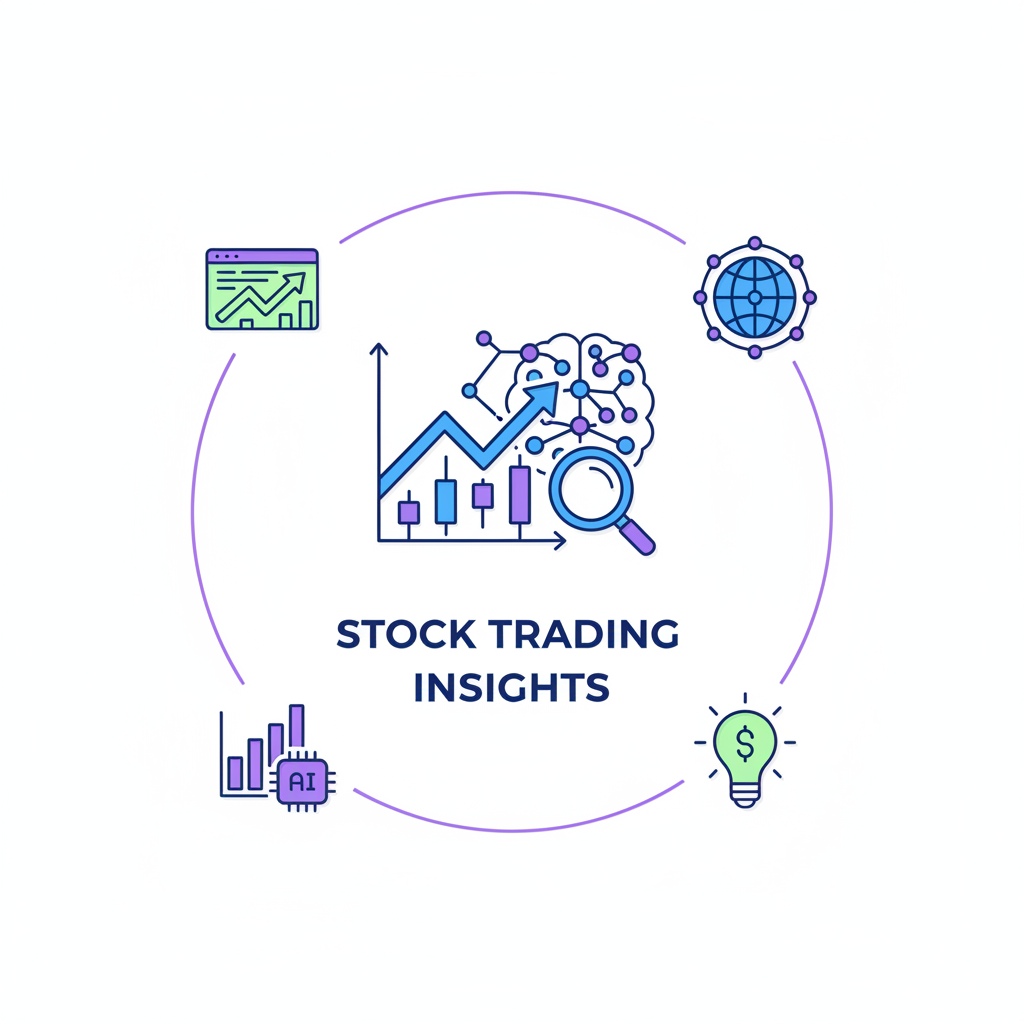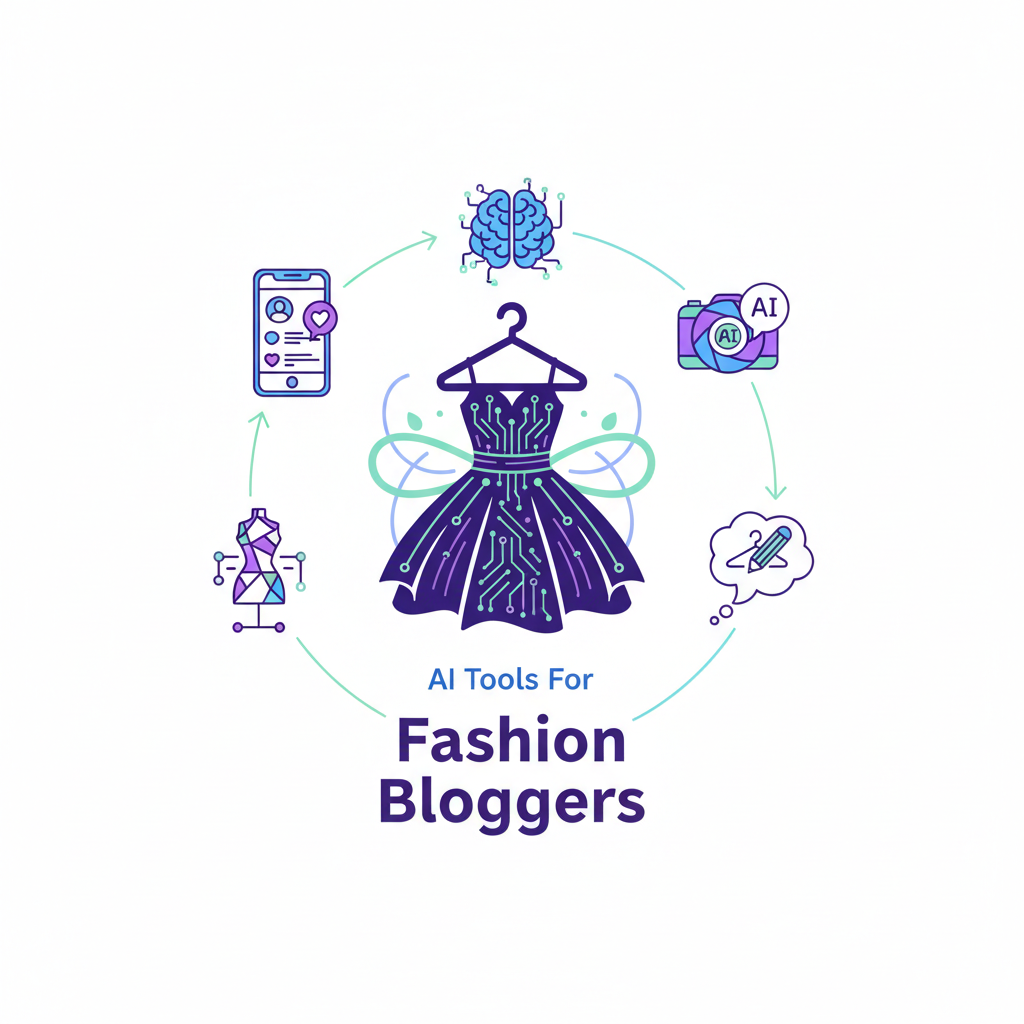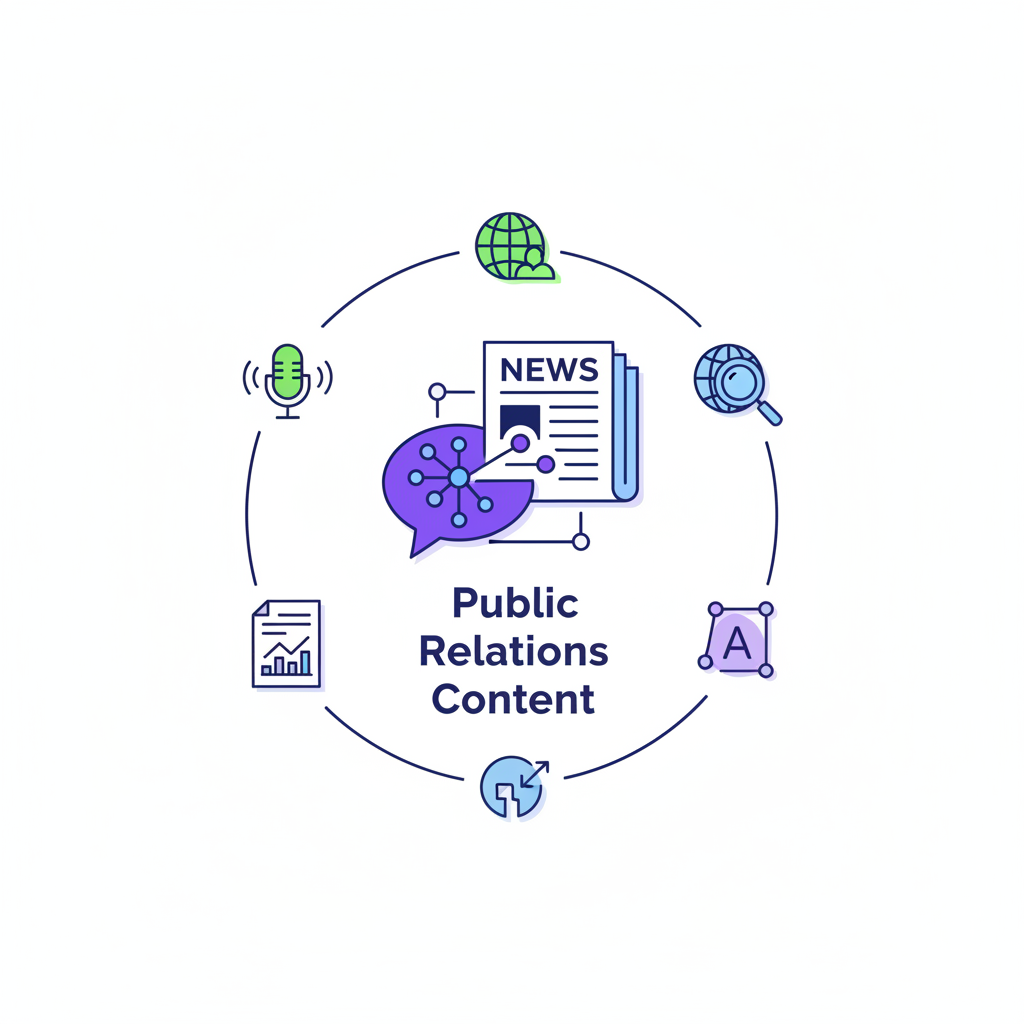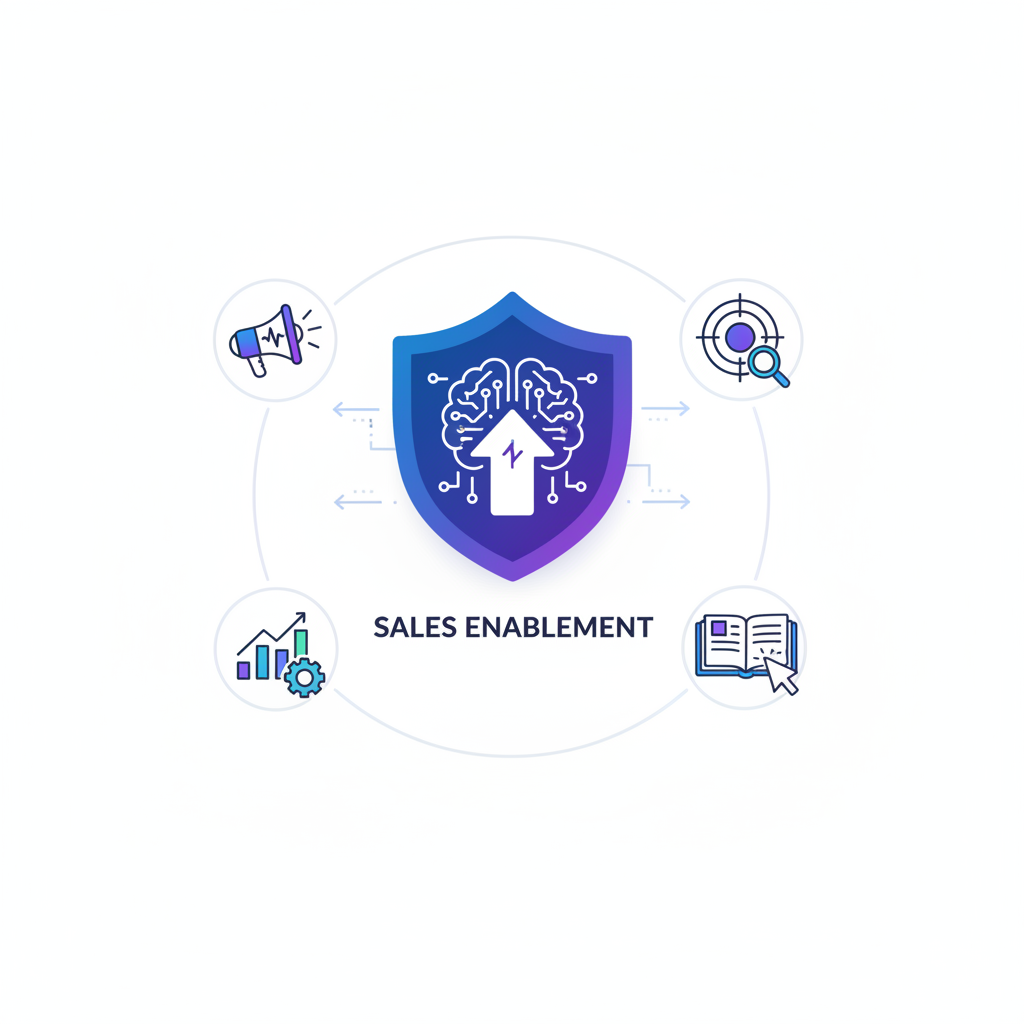Top 10 AI Tools for Stock Trading Insights
AI is revolutionizing stock trading by analyzing vast datasets in real-time. Discover the top 10 AI tools, such as Trade Ideas for real-time signals, TrendSpider for automated technical analysis, and Kavout for predictive ratings, that empower traders to make faster, more data-driven, and emotionally detached decisions.

The financial markets generate an unimaginable amount of data every second. From stock prices and trading volumes to news headlines, social media chatter, and complex economic reports, the information deluge is overwhelming. For decades, traders relied on experience, intuition, and manual chart analysis to navigate this complexity. But in today's high-speed, interconnected world, the human mind alone can no longer keep pace. This is where the real challenge for the modern trader lies: how do you filter out the deafening noise to find the quiet, actionable signals that lead to profitable decisions?
Enter Artificial Intelligence. AI is no longer a futuristic concept from science fiction; it's a powerful, accessible technology that is fundamentally revolutionizing stock trading. By leveraging machine learning, natural language processing, and predictive analytics, AI-powered tools can process vast datasets in real-time, identify subtle patterns invisible to the human eye, and provide data-driven insights that were once the exclusive domain of elite hedge funds. This post is your comprehensive guide to the top 10 AI tools that are leveling the playing field, empowering retail traders and seasoned investors alike to make smarter, faster, and more informed decisions.
Understanding the Role of AI in Stock Trading
Before diving into the specific tools, it's crucial to understand what AI actually does in the context of trading. It's not a magic crystal ball that guarantees profits. Instead, think of it as the ultimate analytical co-pilot, enhancing your own strategies and insights. The technology primarily falls into a few key categories:
- Machine Learning (ML): ML algorithms are trained on historical market data to recognize patterns. They can then use these patterns to forecast potential price movements, identify breakout opportunities, or flag unusual trading activity.
- Natural Language Processing (NLP): The market doesn't just move on numbers; it moves on news and sentiment. NLP allows AI to read and interpret human language from millions of sources like news articles, SEC filings, and social media posts. It can then quantify market sentiment (e.g., bullish, bearish, or neutral) for a specific stock or the market as a whole.
- Predictive Analytics: By combining historical data with real-time information, AI models can generate predictive forecasts. This could be a projection of a stock's price range for the next day or an alert about a stock that fits a specific set of criteria for a potential high-probability trade.
- Algorithmic Trading: While traditional algorithmic trading relies on pre-programmed rules (e.g., "buy if the 50-day moving average crosses above the 200-day"), AI introduces adaptability. An AI-powered trading bot can learn from its results and adjust its strategy over time without human intervention. Many developers building these bots use tools like `PyCharm` and host their projects on `GitHub`.
Ultimately, the goal of these technologies is to replace emotion-driven decision-making with data-driven analysis, helping traders manage risk and identify opportunities with greater precision.
The Top 10 AI Tools for Stock Trading Insights
Navigating the growing market of AI trading software can be daunting. We've curated a list of the top 10 platforms, each offering unique features tailored to different trading styles and experience levels.
1. Trade Ideas
Primary Use Case: Real-time stock scanning and AI-driven trade signals.
Its flagship AI, "Holly," is a virtual analyst that runs millions of simulated trades each night to identify strategies with the highest probability of success for the next trading day. Holly presents a curated list of high-potential trade signals.
- Key Features: AI Analyst "Holly," Live Trading Room, Backtesting with OddsMaker, Advanced Charting.
- Who It's Best For: Active day traders and swing traders who need a constant stream of high-quality, data-vetted trade ideas.
2. TrendSpider
Primary Use Case: Automated technical analysis and chart pattern recognition.
TrendSpider automates the tedious process of technical analysis. Its algorithms instantly draw trendlines, identify support and resistance levels, and look for candlestick patterns, saving immense time and reducing human error.
- Key Features: Automated Trendline Detection, Multi-Timeframe Analysis, Dynamic Price Alerts, Strategy Tester.
- Who It's Best For: Technical traders of all levels who want to streamline their charting workflow and make more objective analytical decisions.
3. Tickeron
Primary Use Case: AI-generated trading signals and pattern recognition.
Tickeron offers a suite of AI-powered tools aimed at providing a "robo-advisor" experience. Its "AI Robots" provide a continuous stream of trade ideas with detailed statistics on their past performance, using pattern recognition to predict future price movements.
- Key Features: AI Robots, Pattern Search Engine, AI-Powered Portfolios, Trend Prediction Engine.
- Who It's Best For: Swing traders and investors who prefer a more guided approach and want AI to do most of the heavy lifting in finding opportunities.
4. Blackboxstocks
Primary Use Case: Identifying unusual stock and options activity.
Blackboxstocks is a community-focused platform that combines real-time scanning with social trading. Its proprietary algorithm scans the stock and options markets for unusual volume and options flow, alerting users to potentially explosive moves before they happen.
- Key Features: Real-Time Scanners, Institutional-Grade Analytics (dark pool data), Integrated Discord Community, News and Social Media Feeds.
- Who It's Best For: Day traders, especially those focused on options, who thrive in a community environment and want to capitalize on market momentum.
5. StockHero
Primary Use Case: No-code automated bot trading.
StockHero is designed to make automated bot trading accessible to everyone. It features a user-friendly interface where you can create, test, and deploy trading bots in minutes, without needing to learn a programming language like Python or use an IDE like `VS Code`.
- Key Features: Marketplace of Bots, Paper Trading Mode, Robust Backtesting, Multi-Exchange Support.
- Who It's Best For: Traders who want to automate their strategies 24/7 without needing to learn programming skills.
6. Scanz
Primary Use Case: High-speed market scanning and news filtering.
Scanz is a powerful news and scanning platform built for speed. Its AI helps filter and categorize breaking news and market-moving data faster than mainstream sources, giving day traders a critical edge.
- Key Features: Pro Scanner (complex real-time scans), News Streamer (instant SEC filings/headlines), Level 2 Data and Montage, Breakout Alerts.
- Who It's Best For: Momentum day traders who rely on speed, news catalysts, and deep market data to make split-second decisions.
7. Kavout
Primary Use Case: Predictive stock rating and quantitative analysis.
Kavout leverages machine learning to provide predictive insights. Its core feature is the "K Score," a numerical rating (1 to 9) that reflects a stock's likelihood of outperforming the market over the next one to three months, based on analysis of fundamentals, pricing, and technical indicators.
- Key Features: K Score, AI-Driven Screeners, Kai Portfolio (AI-managed model portfolio), Market Analysis Tools.
- Who It's Best For: Long-term investors and swing traders who want a quantitative, data-driven method for identifying strong stocks.
8. AltIndex
Primary Use Case: Analysis of alternative data for investment insights.
AltIndex specializes in analyzing alternative data sources to find an investment edge. It uses AI to track social media sentiment, employee satisfaction ratings, website traffic trends, and patent filings to gauge a company's health and growth prospects long before they show up in an earnings report.
- Key Features: Stock Sentiment Analysis, Website Traffic Estimations, Employee Satisfaction Data, AI Stock Alerts.
- Who It's Best For: Fundamental investors looking for a unique, forward-looking edge that goes beyond traditional financial statements.
9. Magnifi by TIFIN
Primary Use Case: Thematic and natural language investment search.
Magnifi is an AI-powered investment search engine. Instead of searching by ticker, you can search by theme or idea in plain English (e.g., "invest in companies leading the AI revolution"). The AI instantly provides a list of relevant stocks and funds.
- Key Features: Conversational Search, Portfolio Analysis, AI-Powered Comparisons, Thematic Investing.
- Who It's Best For: Retail investors, especially those new to the market, who want an intuitive, goal-oriented way to build and manage their portfolios.
10. TradingView
Primary Use Case: Advanced charting with access to AI-powered community scripts.
While primarily a charting platform, TradingView is indispensable due to its Pine Script language, which allows developers to create and share sophisticated, AI-powered trading algorithms and indicators with its massive community.
- Key Features: Unrivaled Charting Tools, Pine Script Editor, Massive Library of Indicators, Social Network for Traders.
- Who It's Best For: Traders of all levels. Beginners can use its basic features, while advanced traders can leverage its powerful scripting capabilities to build or use AI-driven tools.
Comparison of Top AI Trading Tools
| Tool | Primary Focus | Best For | Key AI Feature |
|---|---|---|---|
| Trade Ideas | Real-Time Scanning & Signals | Day Traders | AI Analyst "Holly" |
| TrendSpider | Automated Technical Analysis | Technical Traders | Automatic Trendline & Pattern Detection |
| Tickeron | AI-Guided Trade Ideas | Swing Traders | AI Robots & Pattern Search |
| Blackboxstocks | Unusual Options & Equity Flow | Options & Momentum Traders | Real-Time Anomaly Detection Algorithm |
| StockHero | No-Code Automated Trading | Strategy Automators | Marketplace of Trading Bots |
| Scanz | High-Speed News & Scanning | News-Driven Day Traders | AI-Filtered News Streamer |
| Kavout | Predictive Stock Ratings | Long-Term Investors | AI-Generated "K Score" |
| AltIndex | Alternative Data Analysis | Fundamental Investors | Sentiment & Web Traffic Analysis |
| Magnifi by TIFIN | Thematic Investment Search | Retail & New Investors | Natural Language Search Engine |
| TradingView | Charting & Community Scripts | All Traders | Pine Script & AI Community Indicators |
How to Choose the Right AI Trading Tool for You
With so many options, selecting the right tool depends entirely on your individual needs. Here are the key factors to consider:
- Your Trading Style: Are you a day trader who needs real-time data and speed (like Scanz or Trade Ideas)? Or are you a long-term investor who would benefit more from the deep analysis of Kavout or AltIndex?
- Technical Skill Level: If you want to automate without coding, StockHero is a great choice. If you are an advanced technical analyst, TrendSpider offers deep customization.
- Budget: AI trading tools are specialized software, and most come with a subscription fee. Most platforms offer a free trial or a limited free version.
- Data Needs: If you trade on news, Scanz is essential. If you trade on options flow, Blackboxstocks is your go-to. If you believe in the power of alternative data, AltIndex provides a unique perspective.
The Risks and Limitations of AI in Trading
While AI offers a significant edge, it's crucial to be aware of its limitations. Blindly following any tool without critical thinking is a recipe for disaster.
- Over-reliance: Never let an AI tool make decisions for you. Use it as a source of high-quality information and ideas, but the final decision should always be yours, based on your own research and risk tolerance.
- The "Black Box" Problem: Some complex AI models can be a "black box," meaning it's not always clear why they made a particular prediction. This can make it difficult to trust a signal if it contradicts your own analysis.
- Garbage In, Garbage Out: An AI is only as good as the data it's trained on. If the historical data is flawed or doesn't account for certain market conditions, the AI's predictions will be unreliable.
- Black Swan Events: AI models learn from the past. They are not equipped to predict unprecedented global events (like a pandemic or a major geopolitical conflict) that can cause extreme market volatility. During these times, human oversight is more important than ever.
Frequently Asked Questions (FAQ)
Can AI guarantee profits in stock trading?
Absolutely not. No tool, strategy, or person can guarantee profits in the stock market. The market is inherently unpredictable. AI tools are designed to increase your probabilities of success by providing data-driven insights and identifying high-potential setups, but they do not eliminate risk.
Do I need to know how to code to use these AI tools?
For the vast majority of tools on this list, no coding knowledge is required. Platforms like StockHero are specifically designed for no-code automation. The only exception is TradingView's Pine Script, which is a programming language, but you can still use thousands of indicators created by others without writing a single line of code yourself.
Is AI trading legal and regulated?
Yes, using AI tools for analysis and to inform your trading decisions is perfectly legal for retail traders. The regulatory landscape primarily governs institutional firms and high-frequency trading operations to ensure market fairness. All the tools listed here operate well within legal and regulatory boundaries.
How is AI different from traditional algorithmic trading?
Traditional algorithmic trading is based on a fixed set of rules (e.g., if X happens, do Y). AI is more dynamic. A machine learning model can learn from new data and adapt its strategy over time. It can identify more complex and nuanced patterns than a simple rule-based algorithm can.
Conclusion: Your Strategy is a Living Document
The integration of Artificial Intelligence into financial markets represents a paradigm shift, empowering individual traders with capabilities that were once unimaginable. The tools we've explored are not just about automation; they are about augmentation. They enhance your ability to process information, recognize patterns, and make decisions with greater confidence and precision. The most successful traders of the future will be those who effectively partner with this technology, using it as a co-pilot to navigate the complexities of the market.
Your journey into AI-powered trading begins with understanding your own goals and strategies. Define what you want to achieve, identify the tool that best aligns with your approach, and commit to learning its features. Start with a paper trading account or a small position to get comfortable. The future of trading isn't about man versus machine; it's about man with machine. Embrace these tools, and you'll be well-equipped to find your edge in the markets of tomorrow.
Featured Tools

10Web is an AI-powered WordPress platform that offers automated website building, hosting, and optimization with AI assistance for content and image generation.

A global creative platform connecting businesses with freelance designers for custom graphic design projects.

Acquire.io is a customer engagement platform offering live chat, AI chatbots, co-browsing, and video chat to enhance customer support and sales.

A customer experience automation platform combining email marketing, marketing automation, and CRM with AI-powered personalization.

An AI-powered customer service automation platform that delivers personalized, instant support across various channels.
Top AI Categories
Related Articles

Top 10 AI Tools for Fashion Bloggers
Discover insights about AI tools and technology.

Top 10 AI Tools for Public Relations Content
Discover insights about AI tools and technology.

Top 10 AI Tools for Sales Enablement
Discover insights about AI tools and technology.